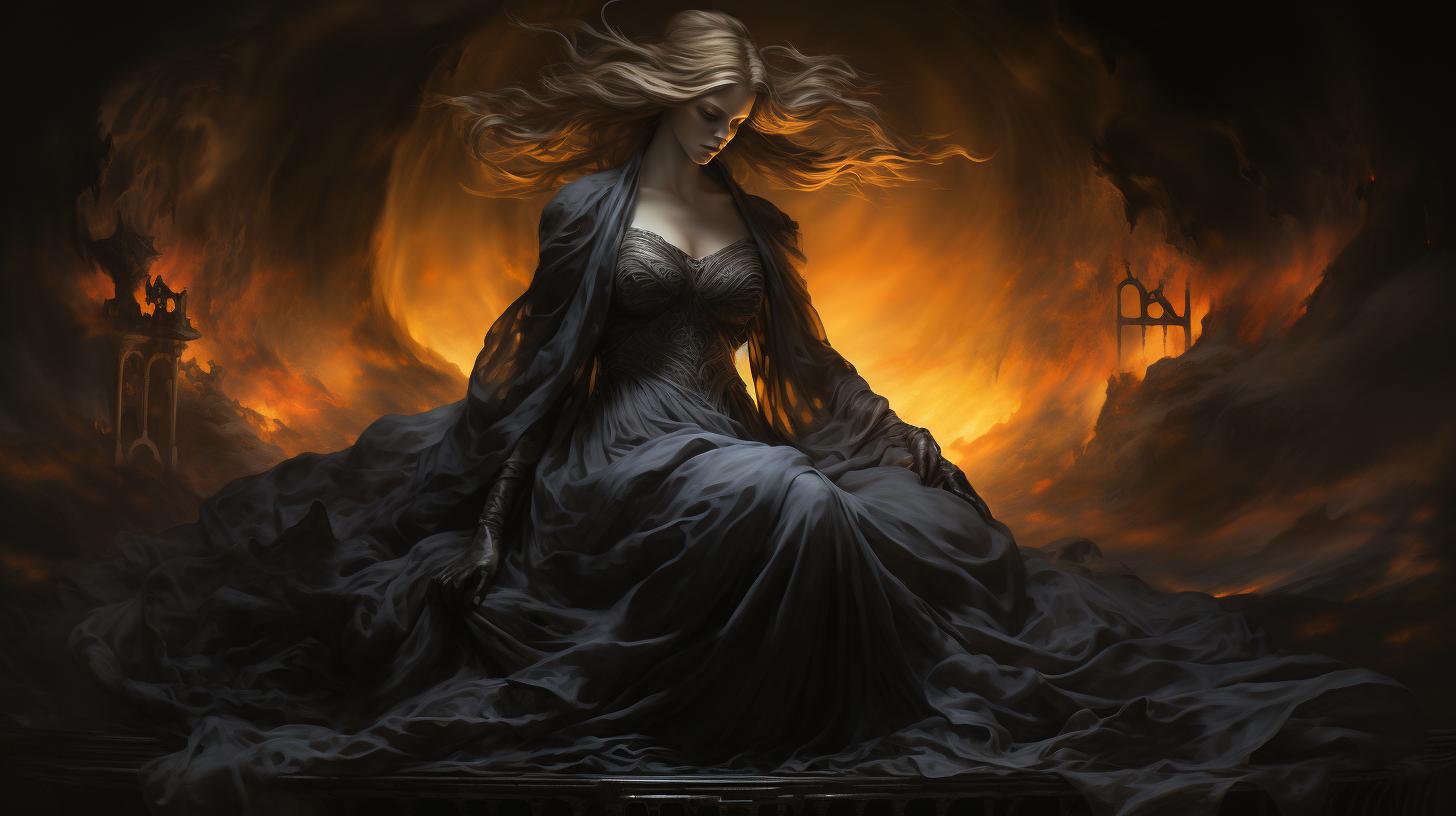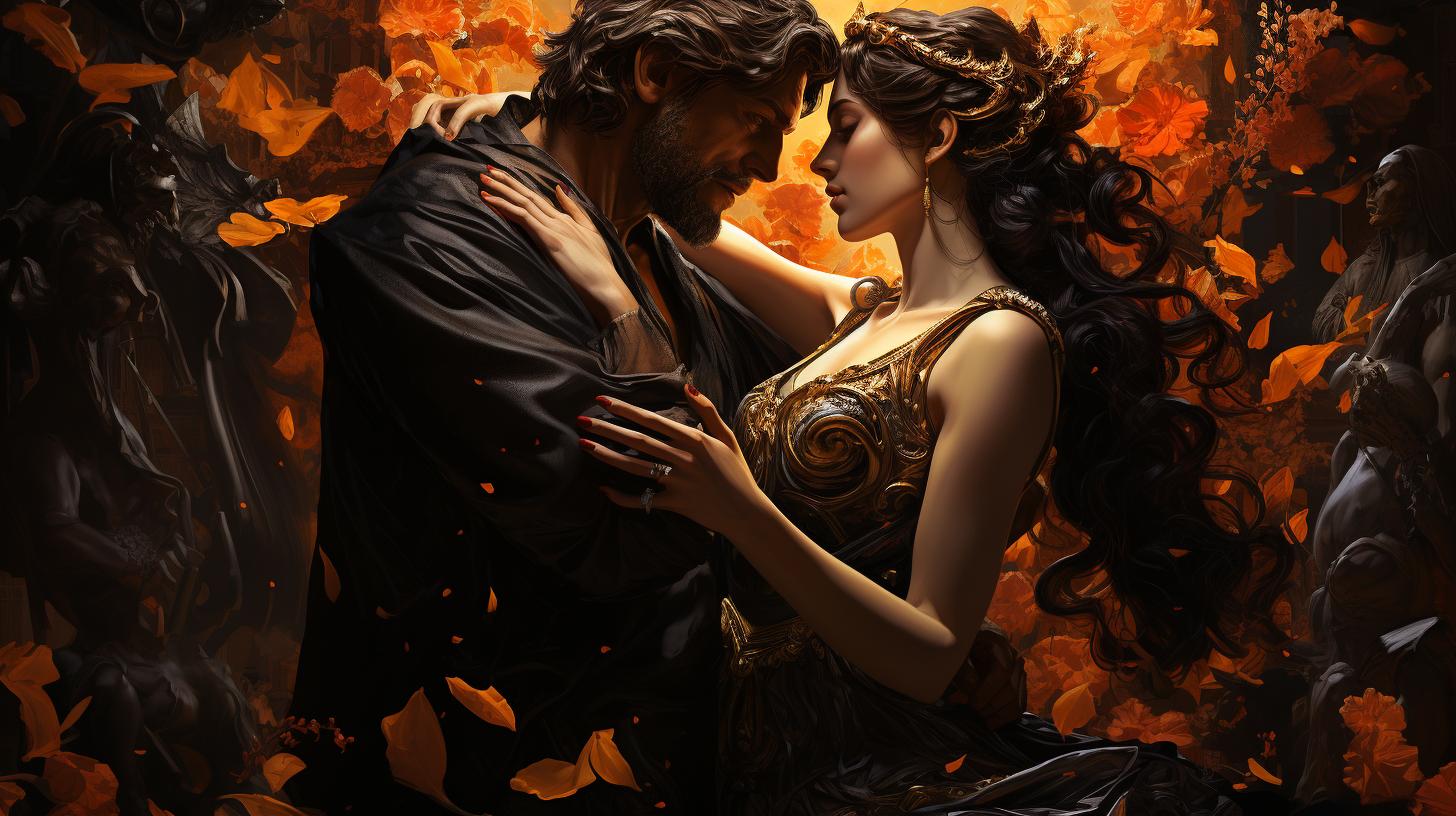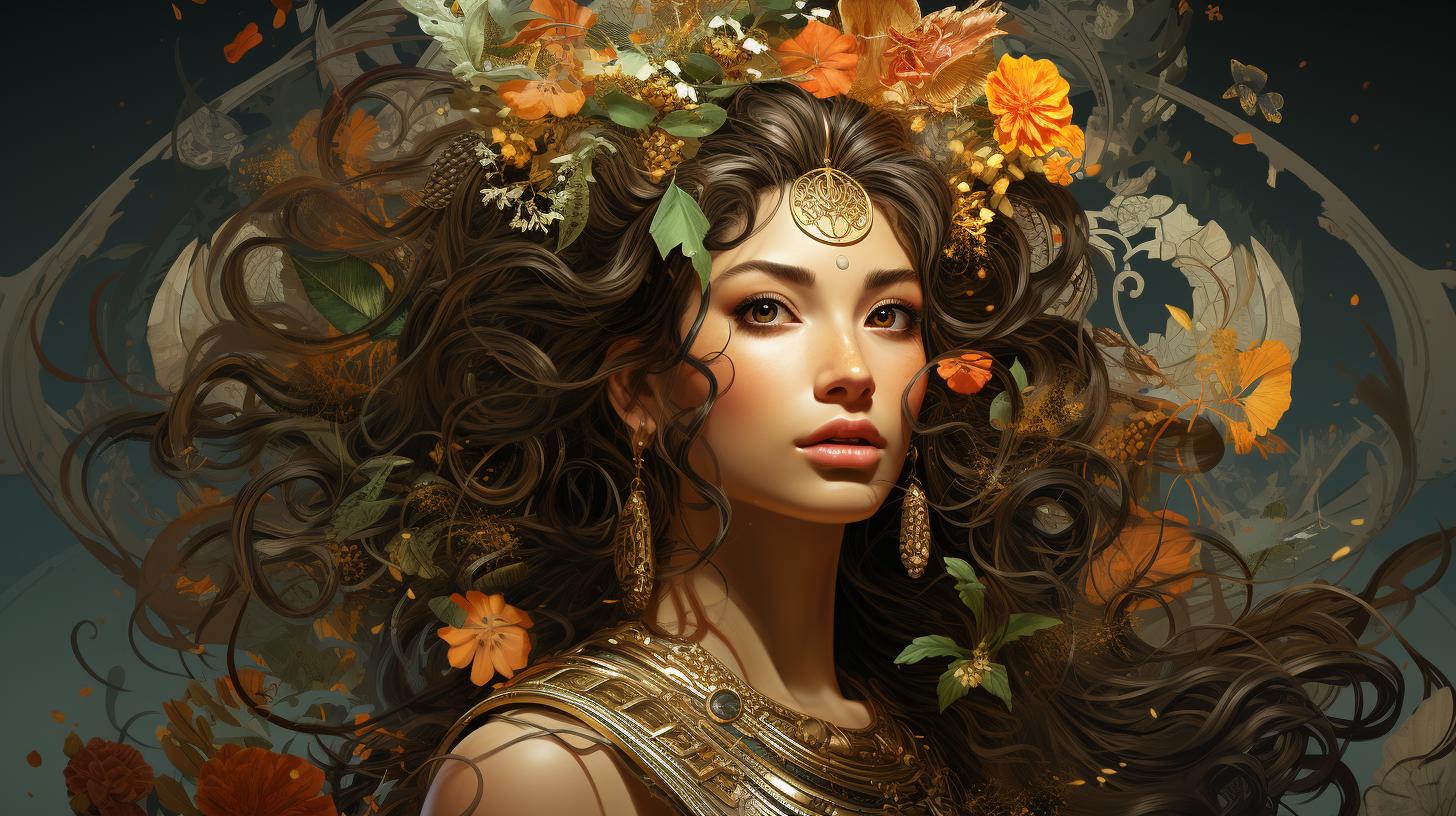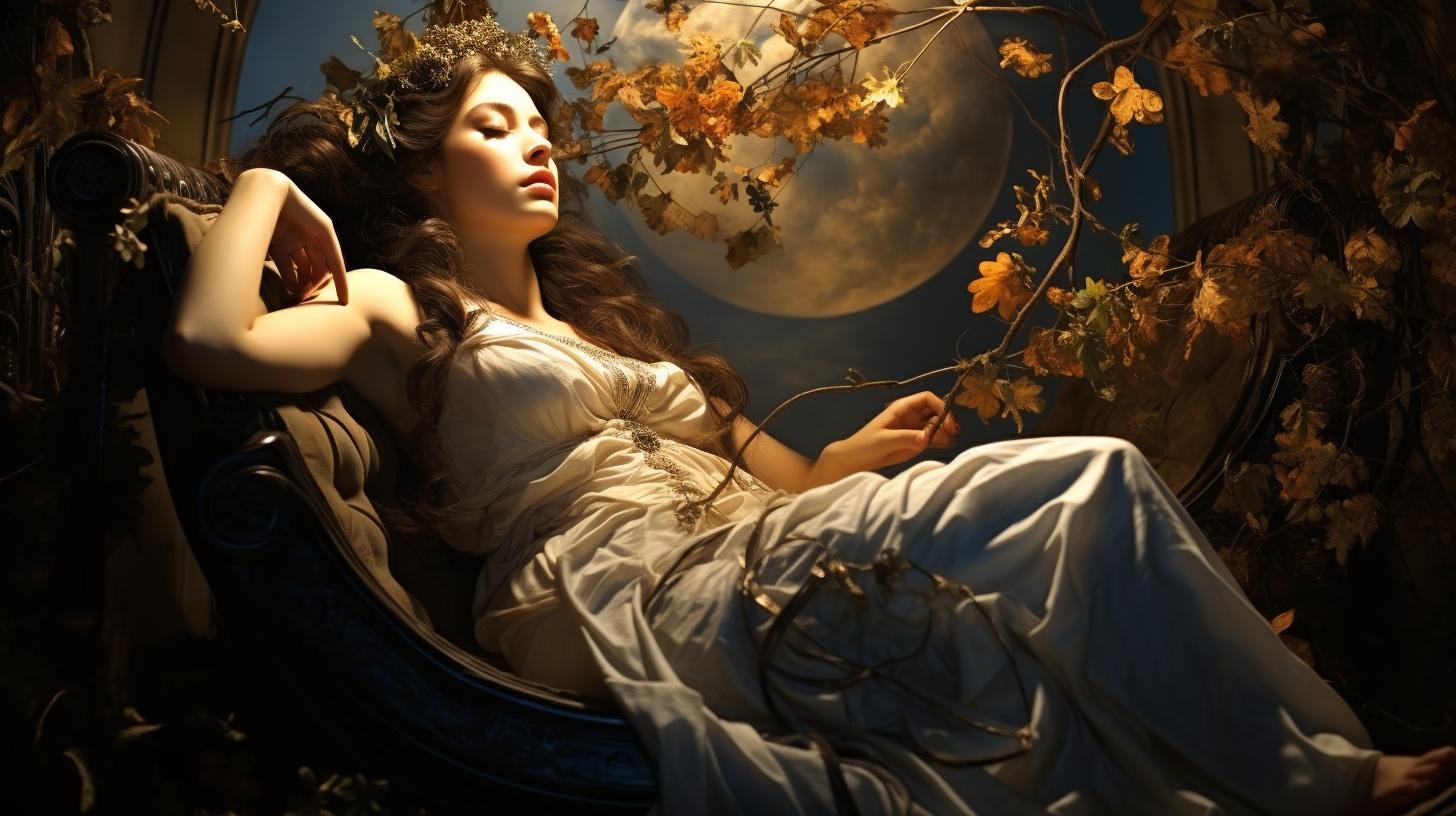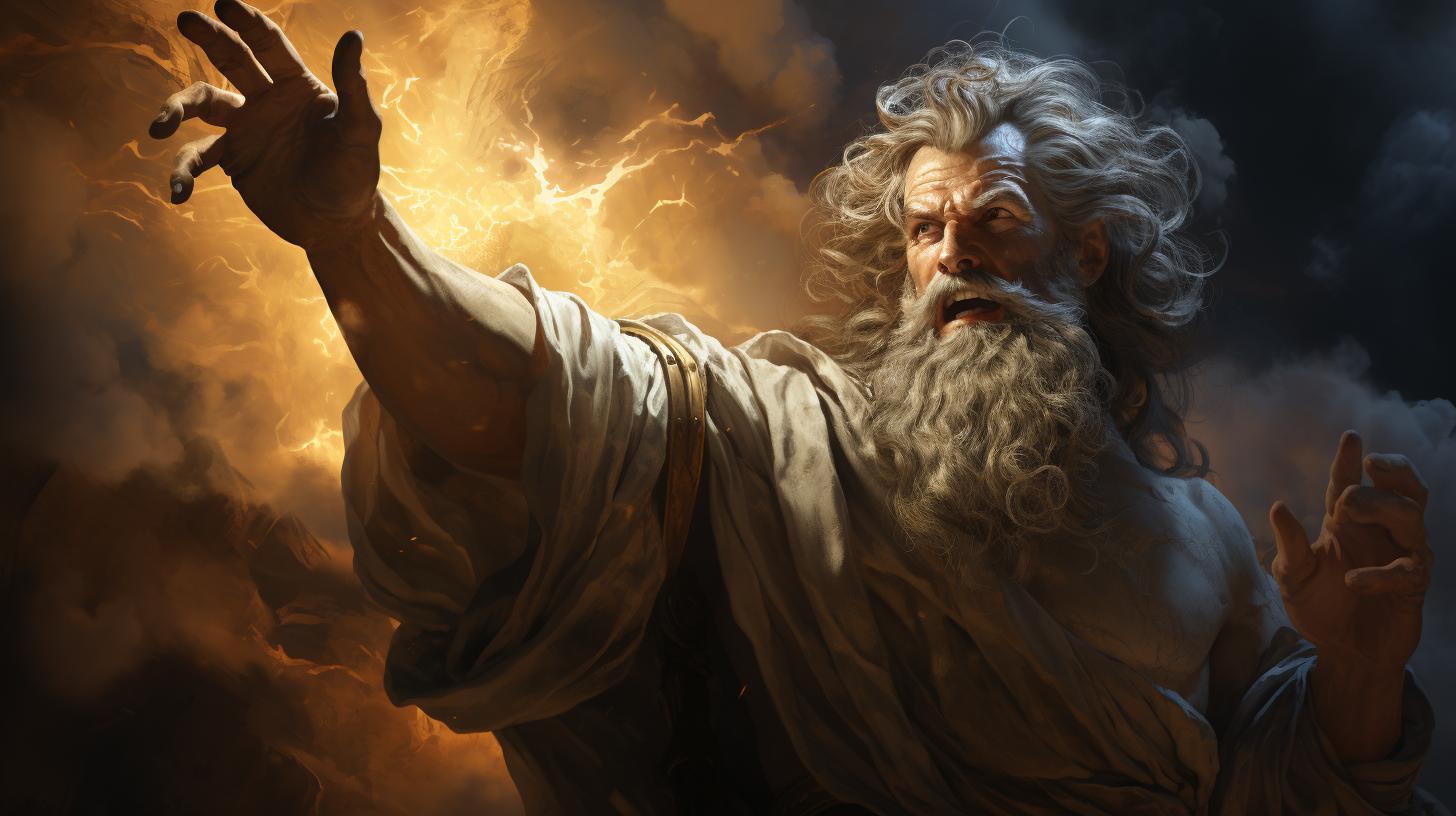Achlys Greek God: The Dark and Mysterious Deity of Death and Misery
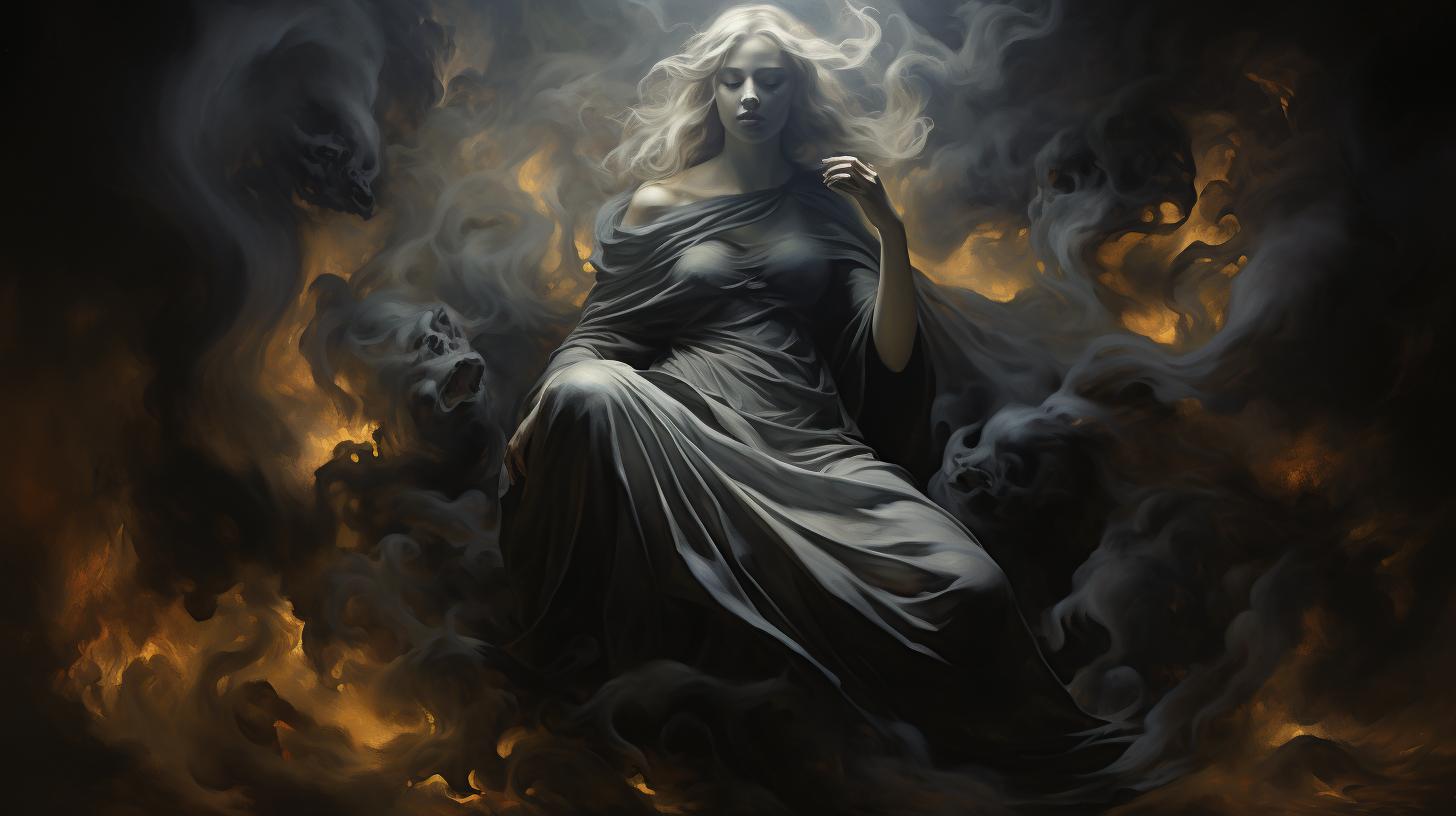
Achlys Greek god is a primordial deity in Greek mythology, associated with death, misery, and sadness. With a pale and emaciated figure, Akhlys personifies the eternal night and is often depicted with bloodstained cheeks and long nails.
In Percy Jackson books, she is portrayed as a victim of famine, with red-clawed cheeks and bloodshot eyes. Akhlys is known for her association with poisonous plants and is said to have provided Hera with poisonous flowers for a transformation spell.
Her appearance reflects despair and she is often linked to the concepts of mist, poison, and tears. The influence of Akhlys extends to ancient Greek literature and modern interpretations in popular culture.
Origins and Mythological Significance
Achlys, the Greek goddess of death, misery, and tragedy, holds a significant role in ancient Greek mythology. She is believed to be one of the primordial deities, existing even before the Chaos, and personifies the eternal night.
Achlys is often associated with the concept of primordial darkness and is known as the embodiment of sorrow and despair.
Throughout Greek mythology, Achlys is closely linked to the themes of death, suffering, and the inevitability of human mortality.
She is depicted as a pale and emaciated figure, with bloodstained cheeks and long, ragged nails. Achlys’ appearance reflects the desolation and hopelessness that accompanies death, captivating the imaginations of ancient Greeks.
Furthermore, Achlys’ association with poisonous plants and venoms exemplifies her role as the goddess of deadly substances. Her connection to these toxic elements adds a layer of intrigue and danger to her character, enhancing the mythological significance of her role.
As one of the primordial deities, Achlys plays a crucial part in the creation and order of the universe, setting the stage for subsequent gods and mythical beings. Her influence can be observed in ancient Greek literature, art, and various cultural interpretations throughout history.
Description and Attributes of Achlys
Achlys, the Greek goddess of death, misery, and sadness, is a prominent figure in Greek mythology. She is depicted as a pale and emaciated deity, with teeth chattering, long nails, and blood-stained cheeks.
Achlys is shrouded in a cloud of dust and tears, symbolizing her association with the fog of death. Her appearance is haunting, characterized by a desolate and pale green hue, reflecting her everlasting hunger and swollen knees.
Known for her sardonic nature, Achlys exudes an aura of hopelessness and despair. Although specific weaknesses are not mentioned, her connection with misery and sadness underscores her vulnerability. In ancient cosmogonies, Achlys existed even before Chaos, embodying eternal darkness and the night.
Her influence on Greek literature and mythology is significant, with her name repeatedly associated with words like death, misery, fog, poison, and sorrow.
In Percy Jackson books, Achlys is depicted as a victim of famine, her bloodied claws and runny nose adding to her pitiful appearance.
Additionally, she plays a role in Greek mythology through her interaction with Hera, providing poisonous flowers that transformed Dionysus’ guardians into creatures with animalistic features.
Achlys, with her morose presence and affinity for sorrow and tragedy, symbolizes the darker aspects of existence in Greek mythology, leaving an indelible mark on ancient literature and continuing to captivate modern interpretations in popular culture.
Role in Ancient Greek Cosmogonies
Achlys holds a significant role in ancient Greek cosmogonies, as she is believed to exist even before Chaos, representing eternal night. While her exact origin and parentage remain uncertain, Achlys’s presence in cosmogonies highlights the primordial nature of her powers.
She personifies death, misery, and sorrow, casting a shadow over the world.
According to ancient beliefs, Achlys ushers in the inevitable demise faced by all living beings, reminding them of their mortality.
Her association with the primordial chaos emphasizes the eternal and inescapable nature of death. Achlys’s presence in Greek cosmogonies serves as a reminder of the darker aspects of existence, as she embodies the transience and fragility of life.
Throughout ancient Greek mythology, Achlys’s presence influenced the actions and fates of gods and mortals alike. Her association with death and sorrow plays a crucial role in shaping the narratives of tragic heroes, weaving elements of doom and despair into the fabric of their stories.
As a deity directly linked to mortality, Achlys’s presence highlights the inevitability of suffering and the transient nature of life in ancient Greek cosmogonies.
Depiction in Percy Jackson Books
In the captivating world of Percy Jackson, Akhlys, also known as Achlys, is portrayed as a fascinating character, adding depth and darkness to the series. Her description in the books aligns with her mythological origins, embodying the essence of death and misery.
Akhlys is depicted as a pitiful victim of famine, with bloody claws, red-cheeked and tear-stained cheeks, and hollow, sunken eyes. Her forlorn appearance reflects her association with tragedy and despair. Throughout the series, her presence evokes a sense of unease and foreboding, as she embodies the somber aspects of Greek mythology.
Within the Percy Jackson books, Akhlys is recognized for her sardonic and sadistic nature. Despite her low self-esteem, she revels in inflicting pain and suffering on others. Her abilities to manipulate and control lethal poisons accentuate her role as the goddess of deadly toxins, amplifying her formidable and ominous presence within the narrative.
As the myths intertwine with the modern world, the representation of Akhlys in Percy Jackson adds an intriguing layer to her character, showcasing her as a pivotal force in the balance between good and evil.
She serves as a reminder of the somber consequences that can arise from hubris and the perils of darkness in ancient Greek mythology.
Akhlys and Hera: Mythological Connection
One intriguing aspect of Akhlys’ mythology is her connection with the queen of the gods, Hera. According to myths, Hera sought Akhlys’ assistance in obtaining poisonous flowers to transform Dionysus’ guardians into hybrid creatures.
This collaboration highlights Akhlys’ role as the goddess of lethal poisons and her association with the darker aspects of existence.
Akhlys’ role in Hera’s plan showcases her unique expertise in creating potent toxins that can bring about transformative changes.
The alliance between these two powerful deities emphasizes the significance of Akhlys’ abilities and sheds light on the interconnectedness of various gods and goddesses within Greek mythology.
Their partnership also underscores the complex nature of the gods’ relationships and the diverse skill sets they possess.
Hera, as the goddess of marriage and childbirth, approached Akhlys, a deity of darkness and despair, highlighting the multifaceted nature of mythological characters and their ability to collaborate towards a common goal.
Although Akhlys’ role in Hera’s plan signifies her sordid connection with the goddess, it also emphasizes the essential role she plays within the Greek pantheon. Akhlys’ unique powers, represented by her association with deadly poisons, add depth and complexity to the narrative, highlighting the intricate web of relationships and interdependencies between gods in Greek mythology.
Associations with Death, Misery, and Tragedy
Achlys, the Greek primordial deity, is intimately connected with somber themes of death, misery, and tragedy. Her depiction as a pale, gaunt figure with blood-stained cheeks and long nails reflects her role as the personification of sorrow and despair.
The association between Achlys and death is emphasized by her eerie presence and her embodiment of the eternal night. In ancient Greek cosmogonies, she is believed to have existed even before Chaos, representing an everlasting darkness that shrouds existence.
Achlys is also revered as the goddess of poisonous substances, symbolizing the destructive nature of her powers. Her affiliation with venomous plants and lethal toxins further strengthens her connection with death and misery.
Throughout Greek mythology, Achlys’s influence extends beyond her own realm. In ancient literature, she is frequently invoked in connection with narratives of loss, tragedy, and grief. Her presence brings forth a sense of hopelessness and despair, highlighting the fragility of human existence.
Furthermore, Achlys’s participation in Hera’s quest for poisonous flowers depicts her collaboration with other deities in weaving tales of sorrow and suffering. This association with Hera reinforces Achlys’s role as a bringer of tragedy and misfortune.
Overall, Achlys’s associations with death, misery, and tragedy underscore her significant place in Greek mythology as a formidable force embodying the darker aspects of the human experience.
Symbolism of Mist and Poison
Achlys, the Greek goddess associated with death and misery, is symbolically connected to mist and poison.
The mist represents the shroud of darkness and mystery that surrounds her presence. It is a metaphorical manifestation of the impenetrable veil that envelops death and the unknown. Just as mist can obscure one’s vision, Achlys embodies the enigmatic nature of the afterlife.
Poison, on the other hand, symbolizes the destructive and lethal aspects of Achlys. As the goddess of poisonous substances, she embodies the perils and dangers that can lead to suffering and demise.
Like a venomous snake, her influence instills fear and caution in those who encounter her.
Together, mist and poison serve as potent symbols for the realm of Achlys. They represent the intangible and lethal forces that she embodies, elements that evoke a sense of dread and foreboding.
The mist functions as a veil of uncertainty and the poison as a representation of the deadly consequences that can arise from interaction with her domain.
- Mist symbolizes the shroud of darkness and mystery surrounding Achlys
- Poison represents the destructive and lethal aspects associated with Achlys
Akhlys in Ancient Greek Literature
Akhlys, the primordial Greek goddess representing death and sorrow, has a significant presence in ancient Greek literature.
Her portrayal in various literary works highlights her association with misery, tragedy, and the darker aspects of existence.
In Greek epic poems, Akhlys is often mentioned in the context of mournful scenes and tragic events. She symbolizes the inevitability of death and the grief that accompanies it. Poets use vivid imagery to depict her desolate appearance, with references to her pale, emaciated figure, bloodstained cheeks, and haunting eyes.
From ancient Greek playwrights to lyric poets, Akhlys appears as a symbol of impending doom and sorrowful fate. She serves as a reflection of the harsh realities of life and the transience of human existence.
Her presence in literature serves to evoke emotions of sadness, melancholy, and contemplation of mortality.
In mythological narratives, Akhlys often plays a role in tragic tales, where her influence exacerbates the suffering of characters. Through her association with death and poisonous elements, she fuels the narrative tension and emphasizes the harsh consequences of human actions.
Akhlys’ depiction in ancient Greek literature serves as a constant reminder of the fragility of life and the inevitability of death. Her presence adds depth and complexity to the narratives, reinforcing the thematic exploration of human mortality and the consequences of hubris.
As Greek literature continues to captivate readers and scholars alike, Akhlys remains an enduring figure, representing the eternal presence of sorrow and reminding us of the fleeting nature of our existence.
Comparison with Other Primordial Deities
When examining Akhlys, it is essential to consider her role among other primordial deities in Greek mythology. While some primordial deities represent fundamental aspects of the universe, such as Chaos and Gaia, Akhlys embodies death, misery, and tragedy.
Unlike other primordial deities associated with creation and life, Akhlys stands apart as the personification of darkness and despair. While Nyx represents the night, Akhlys is the embodiment of eternal darkness and sorrow.
Compared to other primordial deities like Chronos, the personification of time, and Erebus, the deity of darkness, Akhlys showcases a unique aspect of existence. She represents the inevitable fate that awaits all living beings, the sorrow that encompasses the human experience.
Furthermore, Akhlys differs from deities like Eros, who symbolizes love and desire, and Nyx, who presides over dreams and sleep. Akhlys’s domain is one of pain and suffering, highlighting the tragic nature of human existence.
However, it is important to note that despite their contrasting domains, all primordial deities hold immense power and significance in Greek mythology. Each deity plays a vital role in shaping the cosmos and the human experience, offering a comprehensive understanding of the diverse aspects of life and existence.
The Influence of Akhlys in Greek and Roman Mythology
Akhlys, the Greek goddess of death, misery, and tragedy, holds a significant place in both Greek and Roman mythology. Her portrayal as the embodiment of sorrow and despair has left an indelible mark on ancient tales.
In Greek mythology, Akhlys is often associated with events of great tragedy and sorrow. She is believed to possess the power to bring strife, misfortune, and suffering upon mortals and immortals alike.
Her presence casts a dark shadow over narratives, emphasizing the inevitability of loss and grief.
In Roman mythology, Akhlys takes on a similar role as the personification of gloom and despair.
Her influence extends to encompass the realms of death and suffering. She is often invoked to explain the harshness and cruelty of fate.
The depiction of Akhlys in both mythologies showcases the importance placed on acknowledging the darker aspects of life.
By embodying death, misery, and tragedy, Akhlys serves as a reminder of the fragile nature of existence and the inherent struggles faced by humanity.
Through her association with sorrow and despair, Akhlys adds depth and complexity to Greek and Roman mythologies.
Her presence serves as a cautionary symbol, reminding us of the precariousness of our own mortality and the importance of cherishing every moment of life.
As Greek and Roman mythologies continue to resonate in contemporary culture, the influence of Akhlys can still be seen in various artistic and literary works.
Her power to evoke strong emotions and explore the depths of human suffering ensures her enduring place in the pantheon of ancient deities.
Interactions with Heroes and Gods
Achlys, the Greek god of death and misery, has been intertwined with various heroes and gods in Greek mythology. Her interactions often involve tragic and fateful encounters, reflecting her dominion over misfortune and sorrow.
One notable interaction is with the hero Heracles (Hercules). According to myth, Heracles encountered Achlys during his infamous Twelve Labors. They crossed paths when Heracles battled the Hydra, a monstrous serpent-like creature with regenerative powers.
The venomous breath of the Hydra was said to be a gift from Achlys, inflicting pain and suffering on all who faced it. Despite the challenges posed by Achlys’ poison, Heracles persevered and succeeded in defeating the Hydra.
Achlys is also associated with the god Dionysus. In some accounts, Hera sought Akhlys’ aid to transform Dionysus’ guardians, the Maenads, into creatures with features like long ears, horse-like tails, cow horns, and sharp fangs.
Achlys used her connection to poison to assist Hera in this undertaking, further solidifying her reputation as a figure of darkness and malevolence.
These interactions exemplify the influence and significance of Achlys in Greek mythology.
Her association with tragedy and her involvement with renowned heroes and powerful gods emphasize her integral role in shaping the course of these myths and the destiny of those involved.
Akhlys in Art and Visual Representations
Akhlys, the Greek goddess of death and misery, has been depicted in various forms of art throughout history.
Artists have captured her haunting and desolate essence, conveying the depth of her sorrow and the darkness she represents.
One common representation of Akhlys is as a pale and emaciated figure, adorned with tattered garments and a countenance of despair.
Her somber expression and hunched posture evoke a sense of hopelessness and tragedy. Artists often depict her with bloodstained cheeks and long, unkempt hair, symbolizing her connection to misery and suffering.
Another recurring motif in the visual portrayal of Akhlys is the presence of mist and fog. Artists use these elements to highlight her association with death and the realms beyond. The ethereal haze enveloping her serves as a reminder of the inevitable end that awaits all living beings.
In ancient Greek pottery, Akhlys is often depicted alongside other deities or mythological figures, emphasizing her role as a formidable force within the pantheon. Her presence in these artistic depictions adds a haunting and ominous atmosphere to the scenes, underscoring the underlying themes of mortality and the fragility of human existence.
Contemporary artists continue to draw inspiration from Akhlys, incorporating her imagery into their works. Paintings, sculptures, and illustrations capture her melancholic essence, offering viewers a glimpse into the realm of darkness and despair she embodies.
Through art, Akhlys and her symbolism are kept alive, serving as a visual representation of the human experience with sorrow, tragedy, and the inevitability of death.
Popular Culture References and Modern Interpretations
Achlys, the Greek god of death and misery, has made appearances and found new interpretations in various forms of popular culture.
The dark and mysterious nature of Achlys has made her an intriguing figure in literature, movies, and other media.
In recent years, Achlys has gained recognition within the fanbase of the Percy Jackson book series, where she is depicted as a haunting and sádica deity.
Her appearance, characterized by pale and desolate features, has captivated readers and added a depth of darkness and tragedy to the narrative.
Achlys has also made appearances in other modern works of fiction, where she embodies the embodiment of despair, sorrow, and the inevitable end.
Her association with death and the macabre has made her a symbol of the darker aspects of human existence.
Furthermore, Achlys has inspired artistic interpretations, with visual representations capturing her eerie presence and capturing the essence of her character.
Artists have depicted her with blood-stained cheeks, emaciated form, and an aura of melancholy that resonates with audiences.
This modern reimagining of Achlys serves as a reminder of the enduring power of Greek mythology and its ability to inspire creative works that explore the depths of human emotions and the mysteries of the afterlife.
.











